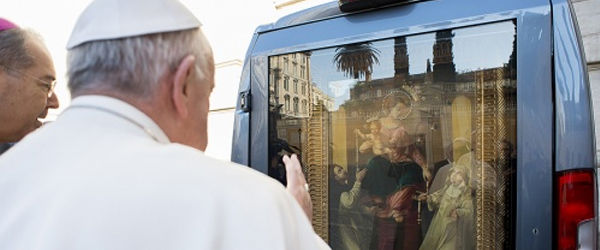The barriers she had in mind take the form of "protective guardians, codes of conduct, background evaluations, policies and procedures, and safety training programs" aimed at preventing sexual abuse of minors.
In a discussion of safe environment programs, Kettelkamp posted 10 child-protection points on her office's website. A report released May 18 in Washington on a major study of the causes and context of the sexual abuse of minors in the church accented the value of safe environment programs.
"No one has the right to have access to children," Kettelkamp said. She insisted that "background checks work," keeping "predators away from children" in churches, schools and other organizations.
The U.S. bishops' 2002 "Charter for the Protection of Children and Young People" created Kettelkamp's office. It staffs the bishops' Committee for the Protection of Children and Young People. Helping dioceses implement safe environment programs is a key priority.
Safe environment programs should make clear to everyone in the community "the standards of conduct for clergy and other persons in positions of trust with regard to sexual abuse," the charter said.
The programs equip children, youths, parents, ministers, educators, volunteers and others to recognize the warning signs and grooming techniques of potential sexual abusers. For example, Kettelkamp said:
— Some seek "age-inappropriate relationships" and are "more comfortable with children than fellow adults."
— Some abusers give potential victims "undue attention or lavish gifts."
— Some allow "young people to participate in activities" their parents would disapprove of, such as viewing pornography or consuming alcohol.
Today, safe environment programs exist in the vast majority of U.S. dioceses. Diocesan websites commonly provide an easy-to-spot link to the local church's program.
In the Archdiocese of Los Angeles, the Office of Safeguard the Children is dedicated to "protecting all of God's children" by fully implementing Article 12 of the Charter for the Protection of Children and Young People adopted by the United States Conference of Catholic Bishops in 2002.
The Office of Safeguard the Children provides ongoing support, education, training and resources to help prevent child sexual abuse and to address children's safety in our parishes, schools, homes and communities.
The archdiocese has mandated that all adults working with children participate in the VIRTUS® Protecting God's Children Adult Awareness Session. This three-hour training helps clergy, staff, volunteers and parents to understand the facts and myths about child sexual abuse; how perpetrators operate; and how caring adults can take five important steps to keep children safe. The parent session also stresses monitoring of computers, cell phones and other technology that perpetrators use to gain access to children and young people.
This education component helps prevent child sexual abuse by first making every adult employee and volunteer aware of the issues surrounding child sexual abuse. This includes awareness of the many ways sexual abuse harms its victims, their families, the parish, and the community. The awareness session also helps adults learn to recognize the warning signs of abuse and shows them the appropriate way to respond to suspicious behavior.
Finally, the awareness session empowers each person with five steps to help prevent child sexual abuse. More than 50,000 priests, deacons, parish and school staff members and volunteers have already participated in these sessions throughout the five Pastoral Regions of the Archdiocese of Los Angeles. Our goal is to provide this training to all adults who work with children so we can work together as a more effective community to prevent child sexual abuse.
{gallery width=100 height=100}gallery/2011/0520/abuseposter/{/gallery}

